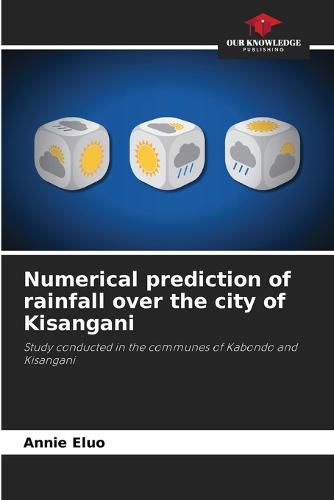Readings Newsletter
Become a Readings Member to make your shopping experience even easier.
Sign in or sign up for free!
You’re not far away from qualifying for FREE standard shipping within Australia
You’ve qualified for FREE standard shipping within Australia
The cart is loading…






Within the framework of the adaptation to the climatic changes, by advocating a study of remote sensing of the city, to identify and measure the zones permanently floodable and flooded by associating them with the climatic models of the pluviometric predictions it was possible to register on our maps processed by GIS under Arc Gis the curves of the levels SRTM, to understand the leveling of floods below the 400m altitude threshold in the city of Kisangani, to identify the months with high rainfall and to find out how many seasons there are in Kisangani and to measure the floodable and flooded areas by associating them with the climate models of rainfall predictions to predict the risks of flooding. In addition, adaptation to climate change involves, among other things, the construction of dykes and water retention basins, the cultivation of wood energy, the fight against poverty by converting ponds into fish and rice growing areas, the treatment of wastewater, the prevention of water-borne diseases, and the financing of studies on climate predictions and modeling in risk areas such as Kisangani.
$9.00 standard shipping within Australia
FREE standard shipping within Australia for orders over $100.00
Express & International shipping calculated at checkout
Within the framework of the adaptation to the climatic changes, by advocating a study of remote sensing of the city, to identify and measure the zones permanently floodable and flooded by associating them with the climatic models of the pluviometric predictions it was possible to register on our maps processed by GIS under Arc Gis the curves of the levels SRTM, to understand the leveling of floods below the 400m altitude threshold in the city of Kisangani, to identify the months with high rainfall and to find out how many seasons there are in Kisangani and to measure the floodable and flooded areas by associating them with the climate models of rainfall predictions to predict the risks of flooding. In addition, adaptation to climate change involves, among other things, the construction of dykes and water retention basins, the cultivation of wood energy, the fight against poverty by converting ponds into fish and rice growing areas, the treatment of wastewater, the prevention of water-borne diseases, and the financing of studies on climate predictions and modeling in risk areas such as Kisangani.